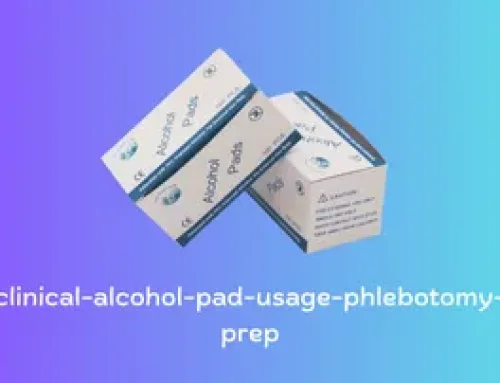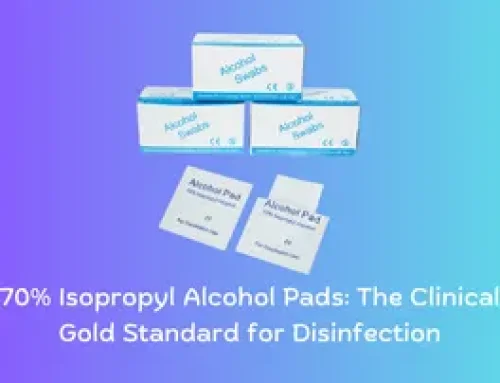We recognize the significance of selecting appropriate medical equipment to ensure optimal outcomes for our patients, and one crucial device is the needle-free connector. This article delves into the advantages of utilizing needle-free connectors in medical environments and how they can enhance patient safety and contentment.
Introduction
Needle-free connectors are a relatively new technology that has revolutionized the way healthcare professionals manage patient care. These connectors provide a sterile, safe, and easy way to connect medical devices to the body without using needles. In this article, we will explore the various benefits of needle-free connectors for healthcare professionals and how they improve patient care.
Benefits of Needle-Free Connectors
Reduced Infection Risk
Another significant benefit of using needle-free connectors in healthcare is the reduced risk of infections. Traditional needle and syringe methods can cause infections by introducing microorganisms into the body through the puncture wound. Needlestick injuries can also transmit bloodborne pathogens from the patient to the healthcare professional.
In contrast, needle-free connectors are designed to minimize the risk of infection by creating a closed system that reduces the potential for contamination. The connectors are designed to prevent microorganisms from entering the system and to prevent backflow or retrograde flow, which can introduce microorganisms into the patient’s bloodstream.
The use of needle-free connectors has been shown to significantly reduce the incidence of catheter-related bloodstream infections (CRBSIs) and central line-associated bloodstream infections (CLABSIs). These infections can be serious and even life-threatening, and they can result in longer hospital stays, increased healthcare costs, and patient morbidity and mortality.
Improved Safety and Compliance
One of the main benefits of using needle-free connectors in healthcare is improved safety and compliance. Traditional needle and syringe methods pose a significant risk of needlestick injuries and bloodborne infections to healthcare professionals. Needlestick injuries are a serious occupational hazard in healthcare.
Needlestick injuries can lead to serious infections such as HIV, hepatitis B, and hepatitis C. Healthcare professionals who are exposed to these infections are at risk of developing life-threatening illnesses. In addition, needlestick injuries can also cause psychological trauma and lost workdays, resulting in significant costs to healthcare organizations.
Needle-free connectors offer a safe and effective alternative to traditional methods. They eliminate the risk of needlestick injuries by connecting medical devices to the body without the use of needles. This reduces the risk of bloodborne infections and protects healthcare professionals from occupational hazards.
In addition to improving safety, the use of needle-free connectors also promotes compliance with infection control protocols and guidelines. Needle-free connectors are designed to reduce the risk of contamination and infection transmission, making them an effective tool for infection control. Studies have shown that the use of needle-free connectors can reduce the incidence of central line-associated bloodstream infections (CLABSIs) by up to 50%.
Increased Efficiency and Cost Savings
Another important benefit of using needle-free connectors in healthcare is increased efficiency and cost savings. Traditional needle and syringe methods can be time-consuming and require multiple steps to prepare and administer medications. This can result in longer patient wait times, increased workload for healthcare professionals, and increased healthcare costs.
In contrast, needle-free connectors can significantly reduce the time and effort required to prepare and administer medications. The connectors can be used to withdraw medications from vials or bags and to connect medical devices to the patient’s body without the need for a separate needle and syringe. This reduces the number of steps required and can result in faster medication administration and reduced patient wait times.
In addition, the use of needle-free connectors can also reduce the risk of medication errors. Traditional methods require multiple steps, which increases the potential for errors such as wrong medication or wrong dose. Needle-free connectors can reduce the number of steps required and provide a clear, visual confirmation of proper medication administration, which can reduce the risk of errors.
Improved Patient Comfort
Traditional needle and syringe methods can be painful and uncomfortable for patients, especially those with needle phobia or chronic illnesses that require frequent injections. This can result in increased anxiety and fear for patients, which can impact their overall healthcare experience.
In contrast, needle-free connectors can significantly reduce the discomfort associated with medication administration. The connectors can be used to connect medical devices to the patient’s body without the need for a separate needle and syringe, which can be less painful and less intimidating for patients. This can help to reduce anxiety and improve patient satisfaction.
In addition, the use of needle-free connectors can also reduce the risk of needlestick injuries for healthcare professionals, which can improve their overall job satisfaction and reduce their risk of occupational hazards. This can also contribute to a safer and more comfortable healthcare environment for both patients and healthcare professionals.
Versatility and Ease of Use
Needle-free connectors are compatible with a wide range of medical devices, making them a versatile option for healthcare professionals. They are also easy to use, requiring minimal training and expertise.
Studies have shown that the use of needle-free connectors can improve the efficiency and ease of medical procedures. In one study, the use of needle-free connectors reduced the time required for medication administration by 80%. Another study found that the use of needle-free connectors reduced the time required for intravenous catheterization by 54%.
Conclusion
Needle-free connectors are an important piece of medical equipment that can improve patient outcomes and safety. By reducing the risk of infection, improving safety, increasing patient comfort, and providing cost savings, needle-free connectors are an essential tool for healthcare providers. At our company, we believe in providing the best possible equipment to ensure the best possible outcomes for our patients. Choose needle-free connectors for your medical needs to ensure the highest level of safety, comfort, and satisfaction for your patients.
FAQs
Are needle-free connectors safe for patients?
Yes, needle-free connectors are safe for patients. They eliminate the risk of needlestick injuries and infections associated with traditional methods.
How do needle-free connectors work?
Needle-free connectors use a variety of mechanisms to connect medical devices to the body without the use of needles, including luer connectors, blunt cannulas, and split septum connectors.
Do all medical devices support the use of needle-free connectors?
Most medical devices are compatible with needle-free connectors, including catheters, IV tubing, and syringes. However, some devices may not be compatible, and healthcare professionals should always check the compatibility before use.
How much time and labor can be saved by using needle-free connectors?
Studies have shown that the use of needle-free connectors can save significant time and labor costs, with an average of 33 minutes per patient in critical care units.
Are there any downsides to using needle-free connectors?
The main downside to using needle-free connectors is the cost, as they are more expensive than traditional methods. However, the cost savings associated with reduced needlestick injuries and infections may offset the initial cost.






